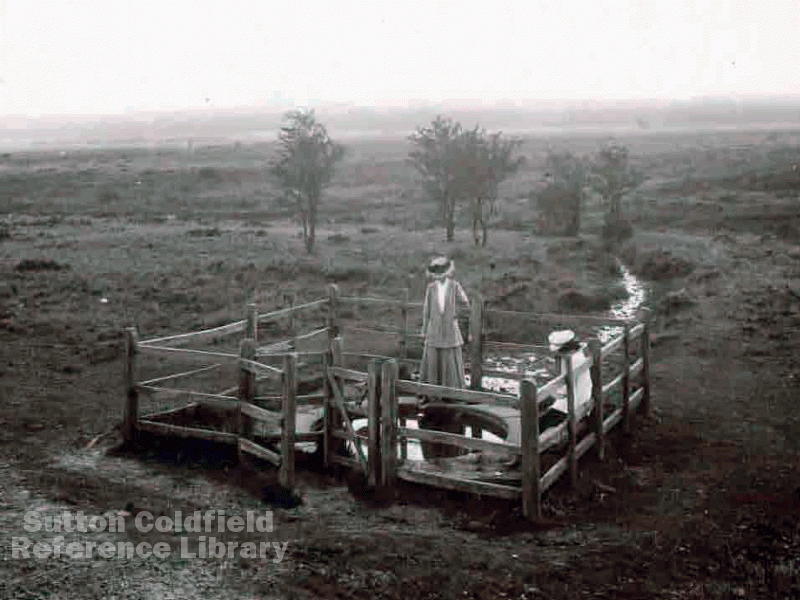There was a fence all round Sutton Park in 1779, and the Warden and Society of Sutton regulated the Park so that only the inhabitants of Sutton were allowed to make use of its resources. From Banners Gate to Streetly Lane the fence separated the Park from the extensive commons (part of the vast Coldfield) of Perry Barr and Great Barr, preventing the sheep on the commons from getting into the Park and the Park cattle from escaping onto the commons. No livestock ever crossed the boundary, so the five gates marked on the 1779 map of the Park must have been there for people to use.
A road leading through the park from Wyndley Gate to Streetly Gate is marked on some early maps, showing that the park was sometimes used as a thoroughfare or short cut when most people walked to get from place to place. This would also account for Banners Gate, opening onto Chester Road opposite Welshman’s Hill; the map shows both these gates in their present locations.
A gate on the 1779 map of Sutton Park labelled “Brandy Gate” also still exists, now known as Royal Oak Gate because it is near the Parson and Clerk public house, formerly the Royal Oak. This gate leads on to a track in the Park known as Lord Donegal’s Ride; Lord Donegal was the master of the South Staffordshire Hunt at the end of the eighteenth century, licensed by the Warden and Society to hunt in the Park - no doubt the hunt assembled in the yard of the Royal Oak before trotting off through the Brandy Gate. The going was wet across the Longmore Valley, so Lord Donegal had a firm track made to have a good gallop.
In 1779 the county boundary followed the Roman Road through the Park, so to the west of Icknield Street the Park was in Staffordshire, and in the townships of Great Barr and Perry Barr. The men of Great Barr must have had some residual rights of common in this part of the Park, which may account for two more gates shown on the 1779 map, Glade Gate on the corner of Thornhill Road and Chester Road and Bridle Gate a short distance along Thornhill Road (there are still pedestrian gates at these locations).
These gates served another purpose, however. For centuries the healing properties of the waters of Rowton’s Well had been known and valued as far away as West Bromwich and Walsall, as Zachariah Twamley remarked in 1855 “Rowton Well has been a noted Well, for a great number of years; For scorbutic eruptions etc, very much resorted to by the working mechanics of Walsall, West Bromwich, and that neighbourhood. Indeed all about that smoky country, to bathe in its pure waters”. Wagon-loads of black-country folk would come along Queslett Road to be deposited at Glade Gate, walk over to Rowtons Well for a bathe, and go back home refreshed and happy.
